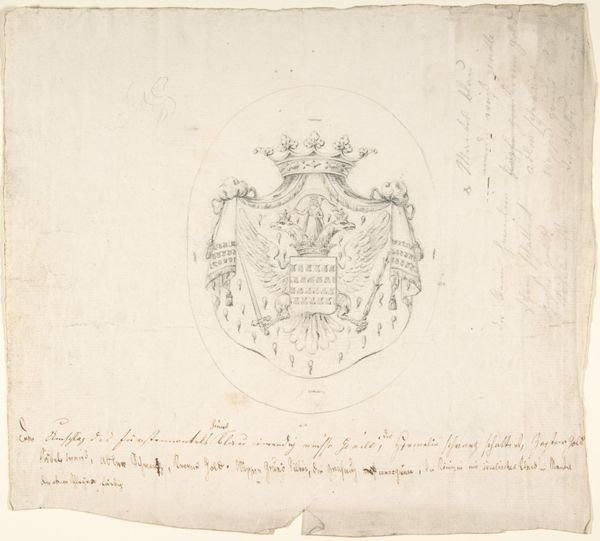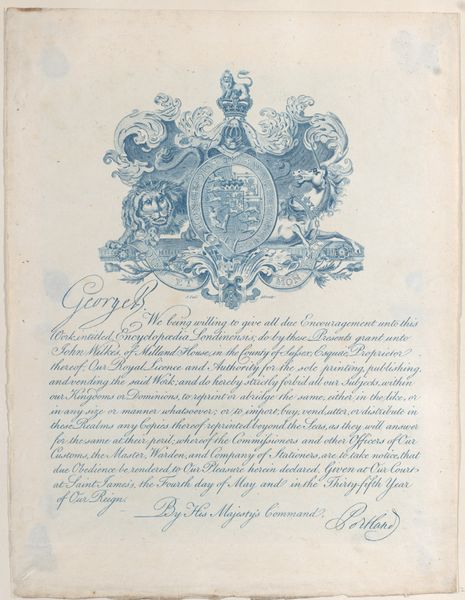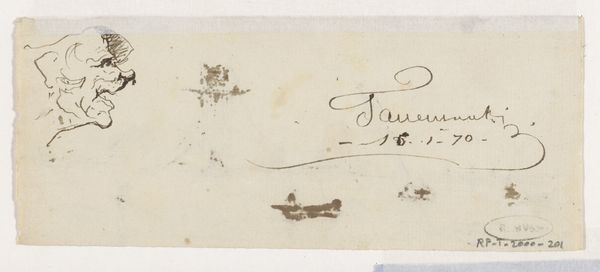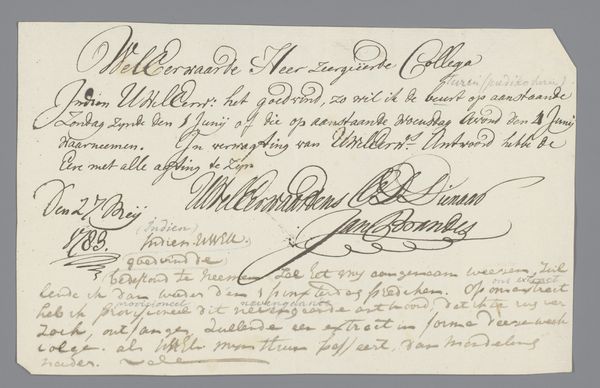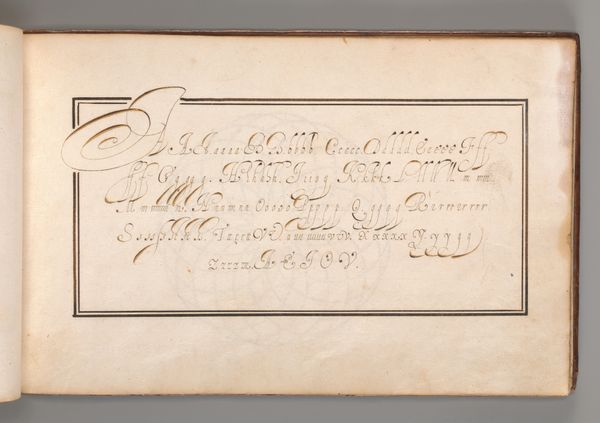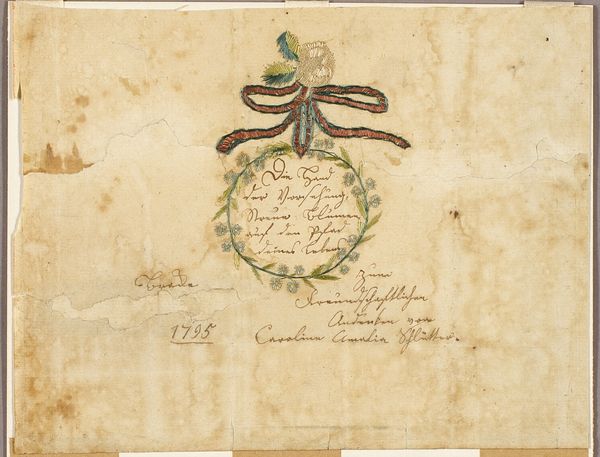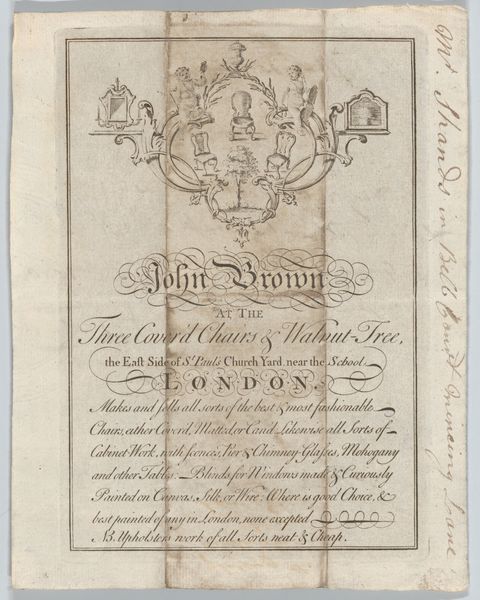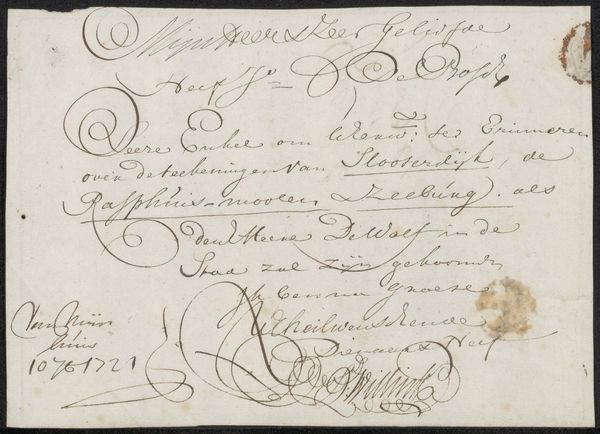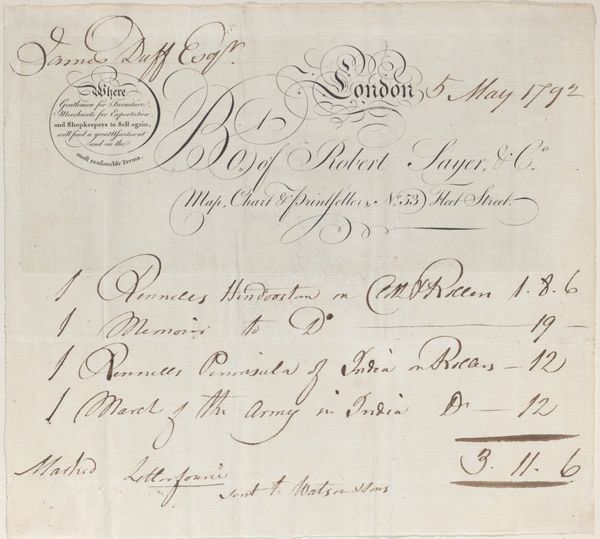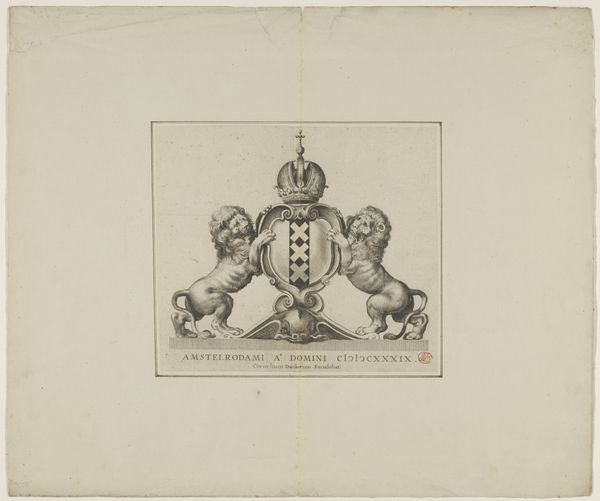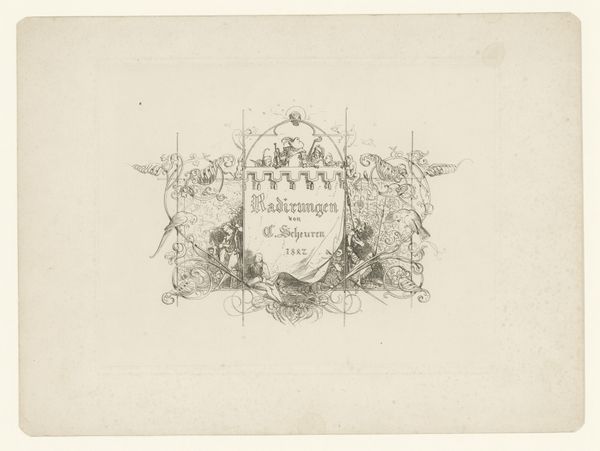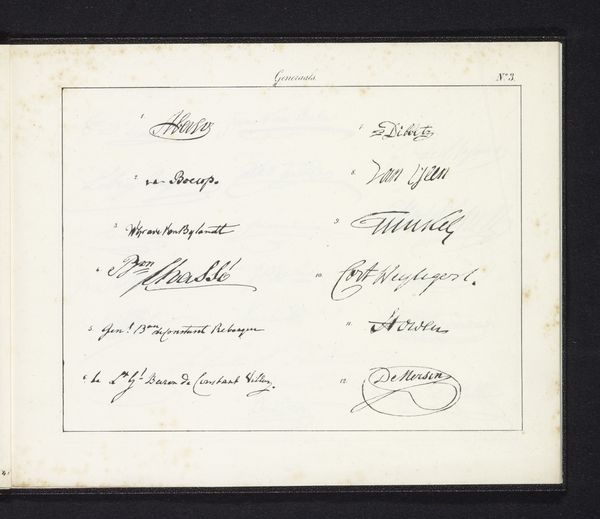
drawing, ink, pen
#
portrait
#
drawing
#
ink
#
romanticism
#
pen-ink sketch
#
pen
#
history-painting
#
academic-art
Dimensions: height 207 mm, width 257 mm
Copyright: Rijks Museum: Open Domain
Curator: Looking at this ink drawing from 1830 titled "Handtekeningen van koning en zijn zoons", or "Signatures of the King and his Sons," I am immediately drawn to its formality. Editor: It's remarkably austere, almost melancholic. The faded ink and delicate lines lend a sense of quiet contemplation, despite the regal subject matter. Curator: Indeed. Consider the visual language present. The crests, the crowns, and of course the names themselves, are symbols meant to convey authority and dynastic power, all rendered with this rather restrained touch. It feels like a calculated projection of strength balanced with vulnerability. Editor: The presence of handwriting alone creates a sense of intimacy. Seeing the King's own hand lends the weight of personhood, while it simultaneously cements his authority through the ritual of signing. And note how the crown and arms feel somewhat delicate. Was there something happening politically at the time affecting the choice of representation here? Curator: The Romantic era, which strongly influenced artistic styles, coincided with significant political upheaval. Royalty across Europe were grappling with revolutions and shifting power dynamics. So this careful staging could represent an attempt to ground power through something lasting, like a symbolic family name captured in a semi-permanent form. Note the bottom most artistic decision with the olive branch. A clear claim of peace and prosperity. Editor: Absolutely, it presents them not as conquerors, but stewards. That calculated humility suggests a deep understanding of the political currents swirling at the time. A crafted legacy. Curator: This is more than just a list of signatures, it's a statement on what constitutes legitimate rule, particularly during moments of great societal flux. And its placement at the opening of a ledger or account indicates its placement at the front of a movement, or endeavor. Editor: Yes, there's a vulnerability to the impermanence of the document that elevates the symbolism; it becomes an artifact communicating a precarious historical moment. The piece really speaks to the ongoing dance between power and fragility. Curator: I agree. And looking at it through the lens of iconography reveals how even the simplest of forms, like handwriting and the use of very fine artistry, can embody complex ideas about legacy, control, and the public's perception of monarchy. Editor: The way the artwork makes this grand statement with almost a whisper... That resonates most with me. It reminds us of the quiet tensions that underly historical narratives.
Comments
No comments
Be the first to comment and join the conversation on the ultimate creative platform.
